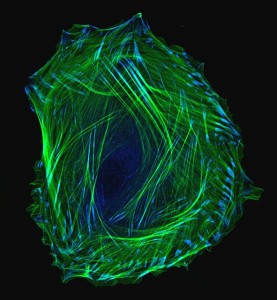MONDAY, 2 DECEMBER 2013
Asymmetric cell division has been proposed to maintain stem cells in most adult organs, but until now the underlying molecular mechanism was unknown. The scientists analysed the genes used by the stem cells and their daughters. They identified myosin II, a protein that homed to only one side of dividing cells that they suspected maintained that side a stem cell by partitioning other key ‘stem’ factors.Myosin II, which has two forms (A and B), helps non-muscle cells divide by closing off the cell walls as the cell splits. By labeling the proteins and viewing dividing cells under a microscope, the researchers showed that the stem cells used both forms of myosin, while the daughter cells only used form A.
Using in vivo tests in mice that had human stem cells injected into their bone marrow, in which myosin II B production was reduced, the scientists saw that the stem cells continued to proliferate, but the number of daughter blood cells dropped because the stem cells could not divide asymmetrically. Drugs that blocked both forms of myosin II inhibited all stem cell division.
The researchers believe that the findings could be used to regrow the blood stem cells of blood cancer patients after chemotherapy. Finding a drug to block myosin II B only would push the stem cells to divide symmetrically and reproduce themselves until there are enough stem cells to replenish the patients blood system.
DOI: 10.1016/j.stem.2013.10.009
Written by Hinal Tanna.

